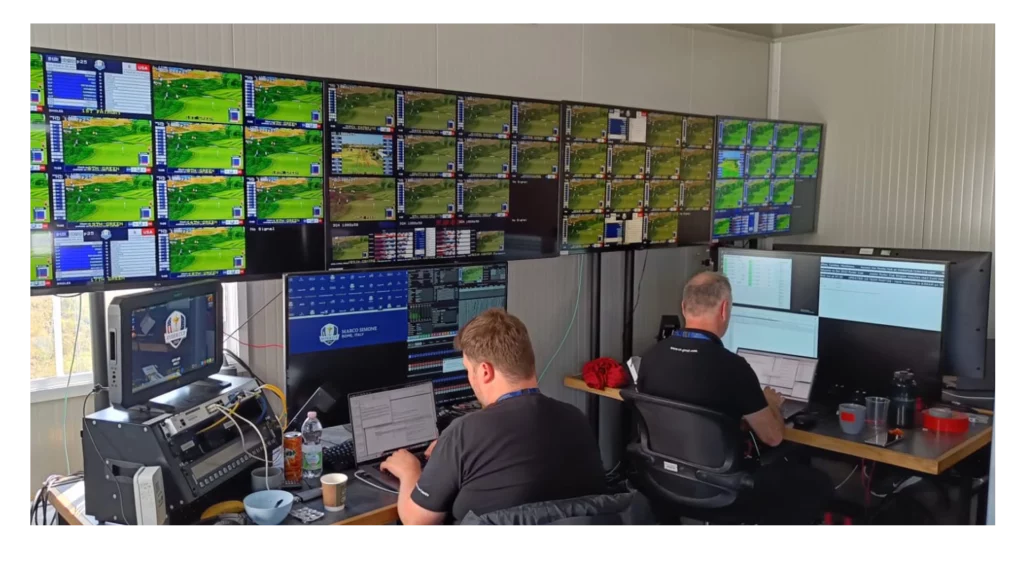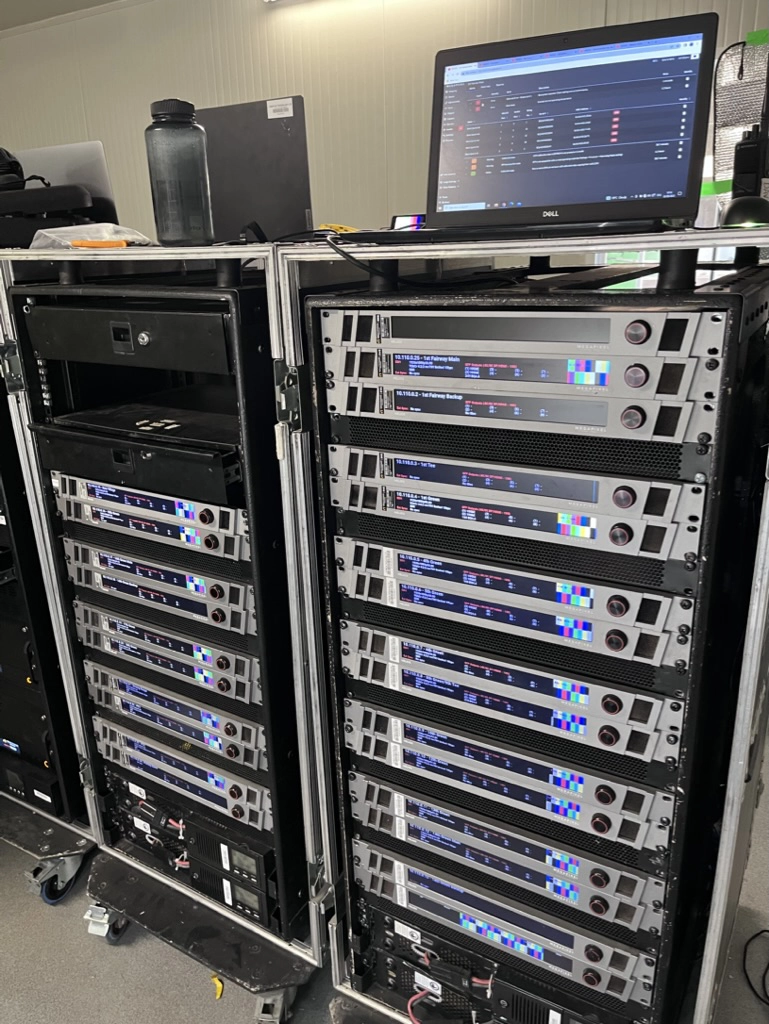

Marco Simone Golf and Country Club in Guidonia Montecelio, northeast of Rome, played host to this year’s Ryder Cup, and Creative Technology, a NEP Group company, supplied over 2,500 tiles of ROE Black Quartz 1.8mm to the event powered by Megapixel processing and monitoring. Twenty-eight screens ranging from 21m2 to a massive 180m2 on the stage in the village were used for the opening ceremony and as a central viewing area throughout the competition. Together a total of over 100 million pixels were delivered across the Marco Simone course.
CT London, CT Northern Europe, and Faber Audiovisual came together to provide all of the equipment, delivering the largest single-site sporting event for the group. The 28-screen deployment was driven by Megapixel’s HELIOS® LED Processing Platform and monitored by their OMNIS® AV Monitoring Platform.

Leveraging Megapixel’s unmatched monitoring capabilities available from HELIOS and OMNIS, a single technician monitored the whole site remotely, many kilometers away from deployment. Real-time actionable feedback from the system ensured absolute reliability while reducing the number of onsite technicians needed to manage such a large event. To further streamline the deployment and reliability, the entire infrastructure was running on HELIOS’s newly launched SMPTE ST 2110 pipeline.
Megapixel’s HELIOS is the industry’s first LED Processing Platform capable of native ST 2110 ingestion. CT and NEP group have embraced this technology with a multi-million dollar investment in 2110 infrastructure. Sid Lobb of CT London says: “We’ve invested heavily in ST 2110 compatible products as we believe this to be the future of live events infrastructure. Megapixel’s HELIOS is a crucial part of our offering in the LED space.”
The entire system, from content generation to pixels on screen, relied on 2110 from the project’s outset. Steve Purkess, Head of Sport and Broadcast at Creative Technology, expressed the significance of this milestone project, stating: “Given the complexity of what we delivered, the move to an IP-based infrastructure was the only logical choice.”

NEP Group companies account for a large portion of HELIOS inventory worldwide, and the two companies work closely together on R&D initiatives regularly. User feedback is a driving force at Megapixel, and the two companies share alignment on the benefits 2110 brings to the live events space. Jeremy Hochman, Co-Founder of Megapixel, says: “We are enthusiastic about SMPTE ST 2110 and leveraging IT infrastructure to drive these high-performance and distributed displays. The IT industry figured out these distribution topology and bandwidth challenges years ago, and the benefits to AV are enormous. It always brings a smile when someone new to AV over IT infrastructure has this amazed look in their eyes realizing a single, simple fiber connection is replacing dozens of copper connectors, and also dozens of rack units of gear that generate heat, noise, and have a significant cost.”
In addition to being at the forefront of ST 2110 usage in the LED processing space, HELIOS is much loved by the onsite technicians who have to deliver these large spectacles in ever tighter timescales. Functionality such as the web-based user interface, ultra-fast seam adjustment, and 2.5G ethernet cabling between tiles means that large, complex LED deployments are always easier with HELIOS compared to other solutions.